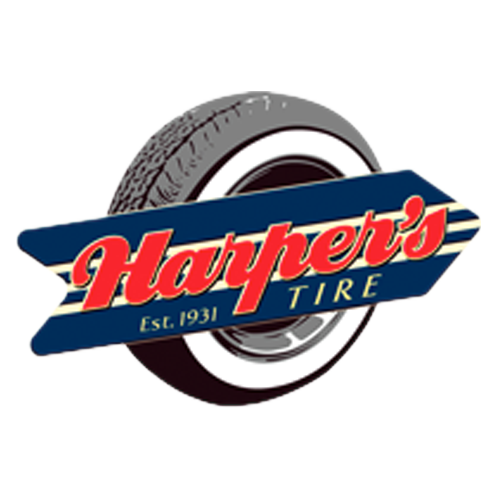
wheel guide
FIND THE RIGHT WHEELS FOR YOU!
What types of wheels are right for you?
Wheels are an integral part of your vehicle. They come from the factory at a basic level and can be upgraded to improve stability, performance and esthetics.
WINTER WHEELS
Winter wheel options are becoming more and more common these days. They often come in basic black steel and can be upgraded to alloy for a lot less than you think. Winter wheels and tire combinations can be (often be) down sized to keep costs down and still perform well in winter driving conditions.
MATCHING WHEELS TO TIRES
If you would like to keep the tires that you currently use for your vehicle and purchase new wheels, it is important to match the new wheels to your tires. In most cases, the overall diameter of the wheel and tire together remains the same even as the diameter of the wheel increases, which you accomplish by fitting a tire with a shorter sidewall to a wheel with a larger diameter. If you want to match wheels to your tires, your new wheels should have the same diameter as your old ones do. You should also pay attention to the width of a set of wheels, since this should also be the same as the width of your tires.
OFFSET & BACKSPACING
Knowing your vehicle’s backspacing size is an essential part of finding the right wheel. Your wheel’s backspacing is measured from the wheel’s mounting surface (in the middle of the wheel) to the back edge of the wheel. The size will vary, depending on the wheel’s offset. If it has zero offset, the hub mounting surface is even with the wheel’s center line. If it has positive offset, the mounting surface is closer to the front of the wheel, while negative offset is closer to the back of the wheel. Backspacing is measured in inches – 4.5”, for example. If you purchase wheels with the wrong backspacing size, it’s likely they aren’t going to fit your car properly.
Looking for a change?
Looking to replace degraded, damaged or just looking to upgrade your current wheels can be a challenge if not done correctly. Proper sizing or upsizing and fitment will make the difference between a smooth or harsh handling vehicle.
STYLE CONSIDERATIONS
The options are limitless when it comes to choosing the style of wheels you want for your vehicle. Aftermarket wheel manufacturers create all kinds of designs with different spoke patterns and colors. Chrome adds a noticeable shine to your vehicle, but black rims can also give your vehicle a great curbside appeal. Other wheel colors, on the other hand, provide an original and customized look. Increasing wheel size is also an important aspect of styling for a vehicle. Larger wheels tend to make a vehicle stand out and are more appealing to the eye.
BOLT PATTERN
When it comes to finding the proper fitment for putting aftermarket or different wheels on your car, the bolt pattern is one of the most important considerations. There is a very good reason for this, since “bolt pattern” refers to the number of lug holes in the wheel and the distance between them. The bolt pattern on the wheel must match the bolt pattern on the car, or the wheel will not fit! Not every wheel will fit your vehicle, but they do come in extremely wide varieties so talk with us to find the perfect fit today.
Always remember when you chose your aftermarket wheels that they must fit properly with proper centering rings and securing hardware.
Wheel Composition and Construction
Here are some of the more common methods used to create popular wheels on the market, if you see a method not listed below please feel free to ask Harper’s any questions you might have.
-
Steel is both heavier and stronger than aluminum, and has been used for wheel construction much longer.
-
Aluminum alloy is a mixture of aluminum and nickel. The proportions of metal in the alloy determine both the strength and weight of the wheel. Alloy wheels are now standard on most cars because they offer both cosmetic and performance advantages. Unlike steel wheels, aluminum alloy can be cast and worked in many different designs, giving cars a much more individual look, and offering owners the chance to customize even more. Alloys do tend to bend easier than steels under road impacts, and have a tendency to crack if bent too far.
-
Cast aluminum is where a molten alloy is poured into a mold and allowed to cool. Several types of casting methods exist, but what they have in common is that cast aluminum is not very dense, and so greater weight of metal is needed for strength.
-
Forged Aluminum is created by taking a solid “billet” of aluminum alloy and subjecting it to a tremendous amount of heat and pressure. The pressure simply crushes the metal into the desired shape. The forged blank can then also be flow-formed to shape the barrel. This creates a wheel that is extremely dense and very strong, but also very light. Pound for pound, forged aluminum is much stronger than a cast aluminum alloy.
-
Flow Forming/rotary forged is a hybrid process in which low pressure cast aluminum is stretched and formed using heat and high-pressure rollers to shape the wheel. The stretching and forming process creates a thin and dense metal, which has properties similar to forged aluminum. The flow forming process was pioneered by BBS Wheels, and a great many of their racing wheels are still made via this process.

